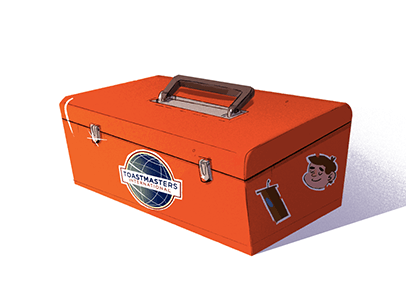Two-hundred pairs of eyeballs are on you after you’ve just delivered a dramatic, beautifully crafted sentence for a memorized district contest speech. Then your mind goes completely blank. You stare back at the audience with a deer-in-headlights expression for what seems like an eternity as you frantically grope for the next phrase. You can’t believe it, but you have no idea what to say next!
Losing your train of thought can happen if you aren’t well prepared. But it can also happen if you have been diligent in your preparation and did your best to memorize your speech. Memorizing your speech can actually cause problems, like sounding too rehearsed or unnatural. It can also lead to an increased risk of “blanking.”
Proactively practice a “blanking” recovery plan like this one. It’s like a disaster drill for speaking.
Imagine that every time you practice your speech with the exact same words, you are creating a deep rut, a well-worn path in your memory with no alternate paths. When you present the speech in a stressful situation (which could be in a different room, or in front of a different audience), you can be thrown off your well-worn path. And, without alternate paths, you become lost. If you “Internalize; don’t memorize” your speech as 2001 World Champion of Public Speaking, Darren LaCroix, suggests, you can reduce the likelihood of blanking.
Having recovery tactics in place will greatly reduce your anxiety, and you may be able to recover without your audience realizing you had a memory lapse. After all, they don’t know what you are going to say next, so if you change it up a bit, they may think you planned it that way.
Recovery Tactics
Pause. Pause for a couple of beats. Give yourself a moment to remember where you were. The audience will likely think you paused for effect.
Maintain eye contact. As you pause, maintain eye contact with a single person. Looking at one person (versus scanning) can be calming.
Rewind. Repeat the last sentence or phrase. This gives your mind both time to think and a little “restart” jolt. One way to do this is to end the last sentence of one point with a word or phrase that you will use to begin the next point. For example, “There are only three things to worry about: bad food, bad people and bad breath. Bad breath is a bigger problem than many people realize.” The phrase “bad breath” is positioned at the end of the first sentence to serve as a trigger for the next sentence.
Fast-forward. Jump ahead to content you do remember. At some point in your speech you may remember what you were going to say earlier. You can work it in when it occurs to you, and you may even prefer the new arrangement.
Take a sip of water. You will look in control and relaxed. Of course, your mind may be racing. (If possible, drink from a glass instead of a bottle as you’ll look more professional.)
Check your notes. Hopefully, you have just a few key words in a large font, as opposed to a page full of detailed notes, so your panic won’t intensify as you scan them.
Go to the next slide.
If you are using PowerPoint, you can use it as a
teleprompter, to jog your memory. (But avoid reading every word on the slides aloud.)
Smile. Smile like you have a secret and just look at the audience for a while. You will look confident and the audience will anticipate your next phrase almost as much as you are.
Have back-up content. Have a short, relevant anecdote to share—a good idea for any presentation, to allow for flexible timing.
Get the audience involved. Initiate a short Q&A session, or have audience members pair up to discuss an important point or do an activity. While they do that, you can review your notes.
Make fun of your memory lapse and build rapport. “I have completely blanked!” (laugh). “Has that ever happened to you? My grandson says I have ‘old-timers’ disease. Now, where was I?”
Have a recovery plan. Proactively practice a “blanking” recovery plan like this one. It’s like a disaster drill for speaking.
Don’t freeze like a deer in headlights and get run over by panicked anxiety. Review these recovery tactics, or create your own recovery plan for the next time you lose your train of thought.
Diane Windingland, DTM is a presentation coach from Spring, Texas, and a member of three clubs: Frankly Speaking Toastmasters in Spring, Texas, and PowerTalk Toastmasters and Readership Toastmasters, both in Minnesota. Learn more at virtualspeechcoach.com.



 Previous
Previous
 Previous Article
Previous Article

